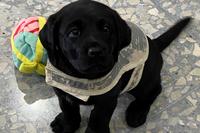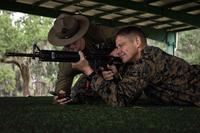Right now, it takes months of training to learn how to remote-control a flying drone. And often, the guys behind the joystick already have their pilot's wings.
But some research over at MIT may be starting to change that. A group of PhD candidates there have figured out a way to let a pilot in one plane guide an unmanned aircraft, just by telling the drone what to do, in plain English. It's part of a Darpa-funded study we first mentioned over the summer.
In a flight test, the pilotless vehicle, called a UAV (unmanned aerial vehicle), responded to sudden changes in plan and avoided unexpected threats en route to its destination, in real time.
"The system allows the pilot to interface with the UAV at a high level--not just 'turn right, turn left' but 'fly to this region and perform this task,'" said Mario Valenti, a flight controls engineer for Boeing who is on leave to pursue a Ph.D. in electrical engineering and computer science at MIT. "The pilot essentially treats the UAV as a wingman," said Valenti, comparing the UAV to a companion pilot in a fighter-plane squadron.
Three elements combine to make MIT's manned-to-unmanned air vehicle guidance system more flexible and more "intelligent" than previous systems. First, the team worked with Teragram Corp., a software company specializing in language technology, to create a natural-language interface through which the two vehicles communicate and coordinate their actions. The interface translates the pilot's human language into the UAV's machine language, and vice versa. "It allows us to task machines at a higher level, improving safety and efficiency," said Feron.
Second, Valenti designed a task scheduler that keeps track of the oft-changing mission data from the manned vehicle and interprets it into tasks the UAV can perform. The task scheduler is integrated with the third element, [a] safe-trajectory-planning algorithm... [which] enable[s] the UAV to choose the fastest safe path to its destination--and then change course in a split second when faced with a new command or a sudden obstacle. (via Boing Boing)







